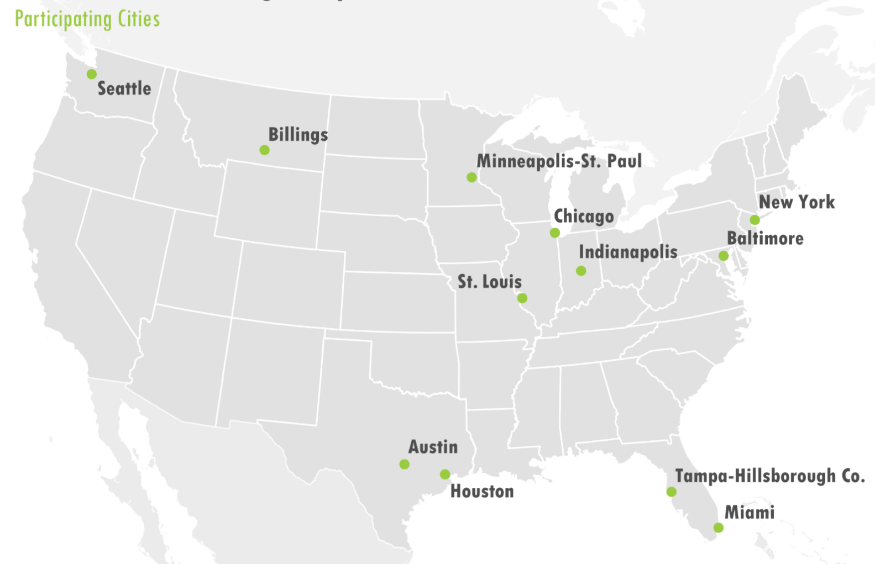The City of Tampa and Hillsborough County are participating in multi-city study comparing heat and cooling across urban natural areas
Tampa is one of 12 cities across the U.S. that will study the cooling potential of urban natural areas. Led by NYC-based nonprofit Natural Areas Conservancy, the results of this study will help cities prepare for climate change.
2021 was the hottest summer on record in the United States. Cities are documented to be 2-10 degrees F hotter than rural areas, and extreme heat is the leading cause of weather-related deaths in the United States. Planting trees and expanding green spaces are known to combat urban heat, but the magnitude of cooling benefits has not been quantified across different segments of the urban forest, such as between trees in managed and natural landscaped, nor across patchwork of land cover types that make up our cities.
Urban natural areas, which include forests, wetlands and grasslands, account for the majority of parkland across U.S. cities. In New York City, research has shown the city’s 20,000 acres of natural areas are some of the coolest spots city-wide. These locations can be 8 degrees F or more cooler than average in the hottest months.

To expand this research, urban natural areas specialists from Tampa and Hillsborough County are participating in a cross-country study as part of the Forests and Cities network for the summer of 2022. These researchers are collaborating to quantify differences in temperature across natural and built environments using satellite data. Researchers will also deploy temperature sensors in urban forested natural areas to test whether healthier ecosystems are cooler than unhealthy ecosystems. These sensors will record the air temperature every five minutes until the end of September. You might spot one of these temperature sensors in Upper Tampa Bay Trail, MacDill 48, Town n‘ Country.
The study is currently underway, and the results--expected in winter 2022 -- will help Tampa and Hillsborough County better understand how urban natural areas can contribute to cooling urban settings and climate change solutions.
About the Forests in Cities (FiC) Network
https://fic.naturalareasnyc.org/
The Forests in Cities Network is a national network dedicated to promoting and advancing healthy forested natural areas in cities across the U.S. through science, management, partnerships, and communications. This network was created in 2019 by the Natural Areas Conservancy.
About the Natural Areas Conservancy
http://www.naturalareasnyc.org/
Founded in 2012, the Natural Areas Conservancy has served as New York City’s leading nonprofit dedicated to studying and helping to care for the city’s 20,000 acres of forests and wetlands. The NAC promotes nature’s diversity and resiliency across the five boroughs.
For more information, contact:
Local point-person:
Brian Knox - Senior Forester Examiner, City of Tampa
brian.knox@tampagov.net
Forests in Cities contact:
Clara Pregitzer - Deputy Director of Conservation Science, Natural Areas Conservancy
clara.pregitzer@naturalareasnyc.org

